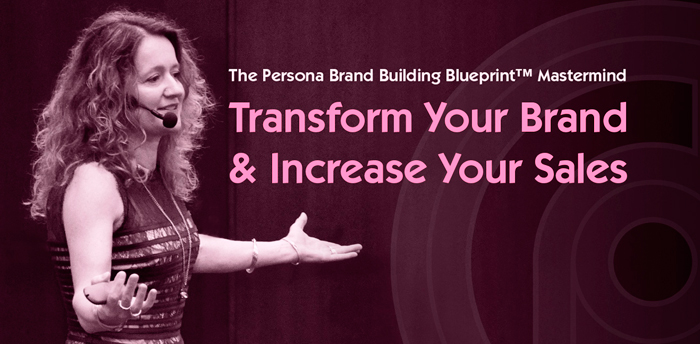Halloween Branding: Hair-Raising Strategies and Tips to Promote Your Brand
Halloween isn’t just for kids anymore. This spooky celebration marks the start of a major holiday season, and it’s grown from a great time to sell sweets and treats, to a massive multi-billion dollar industry with all types of customers getting into the Halloween spirit and looking forward to scary fun opportunities!
Your business can take advantage of this thrilling, spook-tacular holiday with Halloween strategies to promote your brand, and engage customers through the holiday season and beyond.
Why Should You Use Halloween to Feature Your Brand?
Throughout the world, Halloween is big business. Spending on Halloween for 2013 was $8 billion in the United States, and £300 million in the UK. Those numbers are expected to top $11 billion and £350 million, respectively, for the 2014 retail season.
Considering that Halloween spending in the UK was around £12 million in 2001, and the holiday now sees more retail spending than Bonfire Night, there is a definite market for Halloween-themed branding. In fact, Halloween is now the third largest retail holiday in the UK, behind Christmas and Easter.
Candy and costumes are obvious targets for Halloween spending, with Halloween candy sales topping the Easter season, but shoppers are interested in more than these traditional purchases. In the United States, there is a massive market for Halloween-related decorations, with 70% of shoppers planning to decorate for this spooky holiday – compared to 69% who plan to decorate for Christmas.
Even if you don’t sell candy or costumes, your brand can benefit by having a Halloween related promotion. Both product and service providers can benefit by tying into this spooky holiday. According to a study from the International Council of Shopping Centre, 64% of shoppers are looking for sales and promotions on Halloween, which they state as their most important factor in deciding on Halloween purchases.
An example of a non-FMCG company using Halloween for branding is auto insurance company GEICO. Known for its talking animal mascots, the insurance company recently began using a new tagline for its advertising campaigns: “It’s what you do.” This Halloween, GEICO created a commercial that ties the new tagline into popular horror movie tropes for a funny and memorable message.
Looking to cash in on this surprisingly huge holiday? Here are some tips and strategies you can use to elevate your brand on Halloween.
8 Top Tips for Halloween Themed Branding Campaigns
Everyone loves a good contest, especially one that involves holidays and creativity. In fact, 30% more people participate in Halloween-themed Facebook contests alone. Holding a Halloween contest on social media can help you boost visibility for your brand and earn you long-term benefits by growing your brand’s social fan base.
No matter what type of business you have, whether it’s product or service oriented, there are plenty of ways to tie contests or competitions in with Halloween. For example, here are some popular kinds of Halloween contests, and ideas about how you can tie them into your brand.
1. Costume Contests
Product brands might ask their entrants to dress up in costumes that incorporate their products creatively – or even dress up their products in costumes, as Dunkin Donuts is doing on Twitter this year. The brand asked customers to post pictures of coffee cups in costumes under the hashtag #dresseDD, and is giving out prizes for the most creative coffee disguises.

For service brands, it might be a good opportunity to show your lighter human or more humorous side with an idea for a costume contest such as asking your fans and followers to dress as unusual, scary, or funny representatives of your industry. Make sure the prize includes something Halloween-themed, such as a candy gift basket along with a gift card, free service, or whatever you plan to give away.
2. Pumpkin Carving
50% or more of those who celebrate Halloween are into carving pumpkins, so you can get a lot of interest with a pumpkin carving contest. Tie your contest creatively into your brand – such as asking people to carve a company logo into a pumpkin (their own, or yours).
3. Pet Costumes
Dressing up pets for Halloween is becoming a major retail event. Whether you’re a product or a service brand, you can run a pet costume contest along the same lines as a regular costume contest, and offer branded prizes that will appeal to pet owners.
You could also host a Halloween quiz, take a Halloween survey, or run an incentive program for customers to sign up to your mailing list with Halloween-themed giveaways.

Image via www.costumeexpress.com
4. Create Halloween-Themed Content
Working Halloween into your content marketing is an easy and creative way to brand for the spooky holidays. Whether you’re creating written content, images, infographics, or video, there are many ways to tie your brand to Halloween for both product and service-oriented companies.
5. Make a Halloween Bundle
Placing several different products together in a Halloween context can be an effective branding strategy. For example, retail grocery stores might offer a “vampire package” that includes varieties of garlic, meat, and red wine. Outdoor clothing and equipment retailer REI put together a clever “Zombie Survival Guide” infographic to celebrate the holiday that showcases several of their products.

Image via www.rei.com
6. Address Halloween “Pain Points”
Every situation comes with problems, and Halloween is no exception. For this holiday, one of the biggest customer worries is too much candy. Others may be Halloween on a budget, unique costume ideas, or finding Halloween-themed recipes or activities. Can your brand solve holiday problems creatively with some online content? Here’s an example of one personal trainer who tied into Halloween with a post called “The 15-Minute Yoga Routine to Beat Your Holiday Candy Binge.”
7. Consider a Halloween Video
Whether it’s a commercial, or simply posted to YouTube and your company website, holiday-themed videos are a great way to build buzz for your brand. There are endless possibilities in this medium for any brand, whether you’re FMCG, luxury, or service. Hotel reservation website Booking.com created a Halloween video that dramatized a haunted hotel to advertise its services for this holiday.
8. Dress up Your Brand for Halloween
Whether you simply change your website CSS to capture Halloween colours and images, decorate your retail location with all things spooky, or go all out with Halloween content on your brand collateral, promotions, and contests, getting into the spirit of Halloween can help you boost your brand recognition and broaden your customer base – giving you a head start on the big holiday retail season.
Have a happy Halloween!
So, what do you think?
• Have you run brand promotions for Halloween in the past or will you make them part of your branding strategy for next year? Considering the value of this holiday would it be worth reviewing it in the context of a brand audit – what strategies worked (or didn’t work) for you?
• Is your brand tied into Halloween on social media? What kind of contest could you run?
• What Halloween related problems can your brand solve?
• Can you create any Halloween-themed content for your website, business blog, or social media accounts?
• Have you wished your mailing list a Happy Halloween? What promotion can you offer with a holiday greeting?
Feel free to share your thoughts in the comments. We’d love to hear from you!





































